Related Research Articles
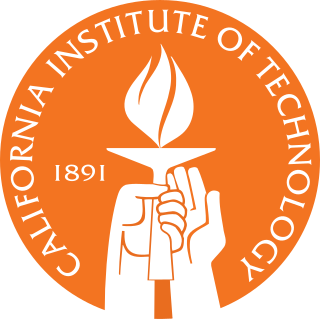
The California Institute of Technology (branded as Caltech or CIT) is a private research university in Pasadena, California. The university is responsible for many modern scientific advancements and is among a small group of institutes of technology in the United States which are strongly devoted to the instruction of pure and applied sciences. Due to its history of technological innovation, Caltech is widely considered to be one of the world's most prestigious universities.

Robert Andrews Millikan was an American experimental physicist who won the Nobel Prize for Physics in 1923 for the measurement of the elementary electric charge and for his work on the photoelectric effect.

Gordon Earle Moore was an American businessman, engineer, and the co-founder and emeritus chairman of Intel Corporation. He proposed Moore's law which makes the observation that the number of transistors in an integrated circuit (IC) doubles about every two years.
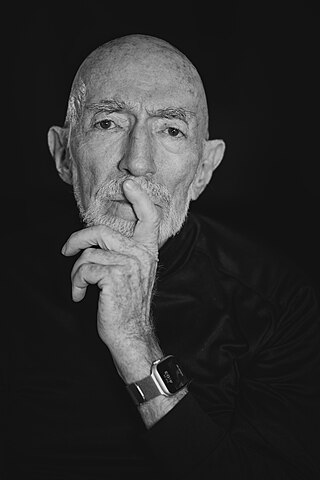
Kip Stephen Thorne is an American theoretical physicist known for his contributions in gravitational physics and astrophysics.

David Jonathan Gross is an American theoretical physicist and string theorist. Along with Frank Wilczek and David Politzer, he was awarded the 2004 Nobel Prize in Physics for their discovery of asymptotic freedom. Gross is the Chancellor's Chair Professor of Theoretical Physics at the Kavli Institute for Theoretical Physics (KITP) of the University of California, Santa Barbara (UCSB), and was formerly the KITP director and holder of their Frederick W. Gluck Chair in Theoretical Physics. He is also a faculty member in the UCSB Physics Department and is currently affiliated with the Institute for Quantum Studies at Chapman University in California. He is a foreign member of the Chinese Academy of Sciences.

Thomas Eugene Everhart FREng is an American educator and physicist. His area of expertise is the physics of electron beams. Together with Richard F. M. Thornley he designed the Everhart–Thornley detector. These detectors are still in use in scanning electron microscopes, even though the first such detector was made available as early as 1956.
Mark Brian Wise is a Canadian-American theoretical physicist. He has conducted research in elementary particle physics and cosmology. He is best known for his role in the development of heavy quark effective theory (HQET), a mathematical formalism that has allowed physicists to make predictions about otherwise intractable problems in the theory of the strong nuclear interactions. He has also published work on mathematical models for finance and risk assessment.
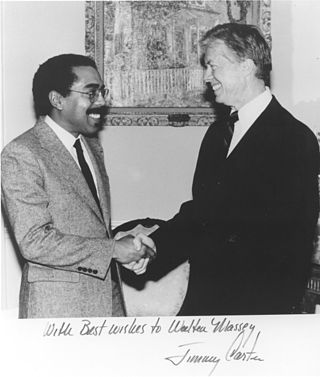
Walter Eugene Massey is an American educator, physicist, and executive. President emeritus of the School of the Art Institute of Chicago (SAIC) and of Morehouse College, he is chairman of the board overseeing construction of the Giant Magellan Telescope, and serves as trustee chair of the City Colleges of Chicago. During his career, Massey has served as head of the National Science Foundation, director of Argonne National Laboratory, and chairman of Bank of America. He has also served in professorial and administrative posts at the University of California, University of Chicago, Brown University, and the University of Illinois.

Maria Spiropulu is a Greek particle physicist. She is the Shang-Yi Ch'en Professor of Physics at the California Institute of Technology.
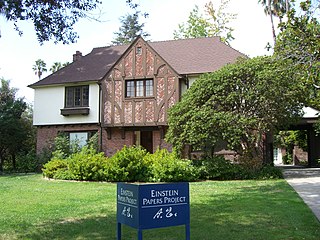
The Einstein Papers Project (EPP) produces the historical edition of the writings and correspondence of Albert Einstein. The EPP collects, transcribes, translates, annotates, and publishes materials from Einstein's literary estate and a multitude of other repositories, which hold Einstein-related historical sources. The staff of the project is an international collaborative group of scholars, editors, researchers, and administrators working on the ongoing authoritative edition, The Collected Papers of Albert Einstein (CPAE).
Asantha R. Cooray is a professor and a chancellor's fellow at University of California, Irvine, California, US, and a member of the research faculty at the California Institute of Technology. His research expertise is in the field of space science, cosmology, astrophysics and is a member of several space-based and NASA sounding rocket experiments and instrumentation aimed at understanding the early universe, first stars, and galaxies. He is a member of the ESA's Herschel Space Observatory-SPIRE Instrument Team and several NASA astrophysics missions planned for this decade, including the Inflation Probe. He has contributed to topics in field such as halo model of the galaxy distribution in the large-scale structure, and has developed ways to measure and quantify physical properties of dark energy and dark matter in the universe. Cooray is also a science editor of Journal of Cosmology and Astroparticle Physics (JCAP).
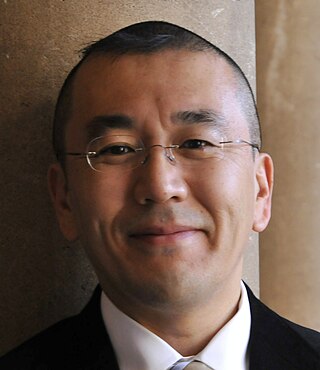
Hirosi Ooguri is a theoretical physicist working on quantum field theory, quantum gravity, superstring theory, and their interfaces with mathematics. He is Fred Kavli Professor of Theoretical Physics and Mathematics and the Founding Director of the Walter Burke Institute for Theoretical Physics at California Institute of Technology. He is also the director of the Kavli Institute for the Physics and Mathematics at the University of Tokyo and is the chair of the board of trustees of the Aspen Center for Physics in Colorado.

Steven Elliot Koonin is an American theoretical physicist and former director of the Center for Urban Science and Progress at New York University. He is also a professor in the Department of Civil and Urban Engineering at NYU's Tandon School of Engineering. From 2004 to 2009, Koonin was employed by BP as the oil and gas company’s Chief Scientist. From 2009 to 2011, he was Under Secretary for Science, Department of Energy, in the Obama administration.
Hugh David Politzer is an American theoretical physicist and the Richard Chace Tolman Professor of Theoretical Physics at the California Institute of Technology. He shared the 2004 Nobel Prize in Physics with David Gross and Frank Wilczek for their discovery of asymptotic freedom in quantum chromodynamics.
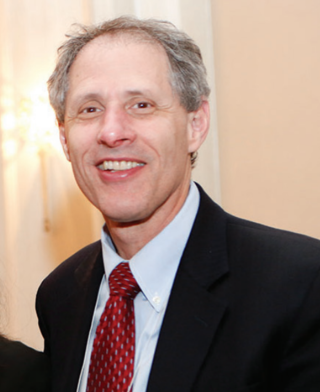
Thomas Felix Rosenbaum is an American condensed matter physicist, professor of physics, and the current president of the California Institute of Technology (Caltech). Previously, Rosenbaum served as a faculty member and Provost of the University of Chicago. He has also served as the vice president for research at Argonne National Laboratory.
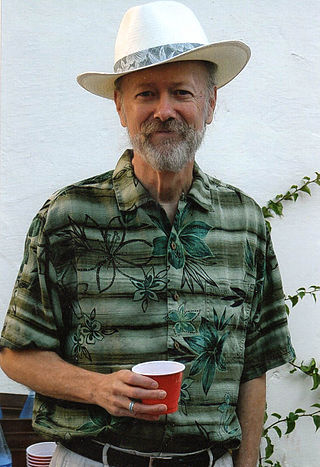
Paul H. Patterson was a neuroscientist and the Anne P. and Benjamin F. Biaggini Professor of Biological Sciences at the California Institute of Technology.
Victoria J. Orphan is a geobiologist at the California Institute of Technology who studies the interactions between marine microorganisms and their environment. As of 2020, she is the Chair for the Center of Environmental Microbial Interactions.
Xie Chen is a Chinese physicist and a professor of theoretical physics at the California Institute of Technology. Her work covers both the field of condensed matter physics and quantum information, with a focus on many-body quantum mechanical systems with unconventional emergent phenomena. She won the 2020 New Horizons in Physics Prize for "incisive contributions to the understanding of topological states of matter and the relationships between them"
Michael Cohen is an American condensed matter physicist and professor emeritus at the University of Pennsylvania. His work investigates the quantum mechanics of real-world material systems, including liquid helium, ferroelectrics, and biological membranes. In 1960, the American Physical Society appointed him a Fellow. In 1962, with colleagues George Stranahan and Robert W. Craig, Cohen co-founded the Aspen Center for Physics (ACP), described as a "utopia for physicists," for which he remains an Honorary Trustee. In 2011, Cohen completed a textbook entitled, Classical Mechanics: a Critical Introduction, in collaboration with fellow physicist Larry Gladney, who prepared the solutions manual.
References
- ↑ "Research - Caltech Walter Burke Institute for Theoretical Physics". burkeinstitute.caltech.edu. Retrieved 2020-01-07.
- ↑ "Walter Burke Institute for Theoretical Physics Established at Caltech". www.caltech.edu. Retrieved 2020-01-07.
- ↑ "Walter Burke Institute for Theoretical Physics Established at Caltech". www.caltech.edu. Retrieved 2020-01-07.
- ↑ "Walter Burke Institute for Theoretical Physics | Not Even Wrong" . Retrieved 2020-01-07.
- ↑ "Caltech Mourns the Loss of Trustee Walter Burke". www.caltech.edu. Retrieved 2020-01-07.